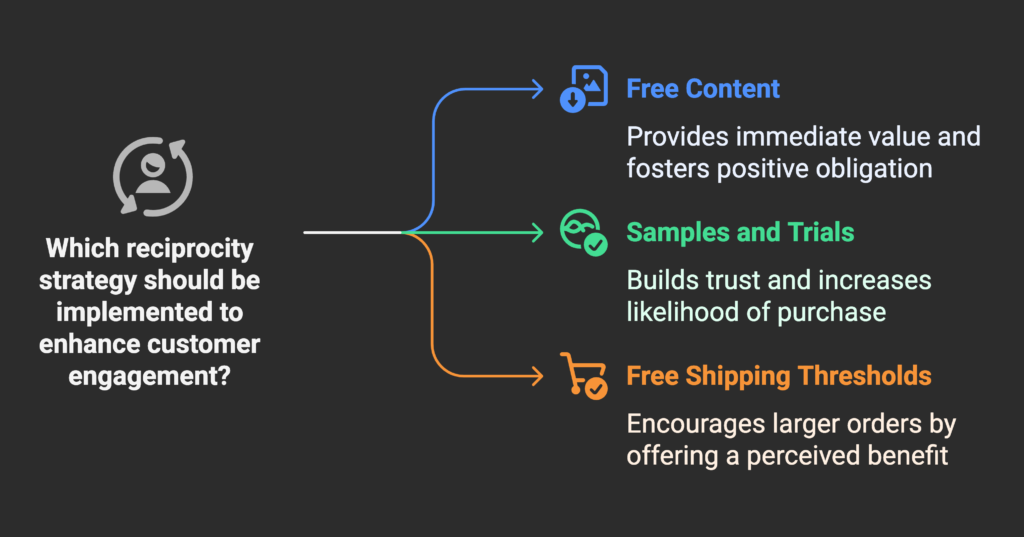Did you know that the average online shopper decides within seconds whether they trust a website enough to make a purchase? In a world where countless online stores fight for attention, standing out means mastering the art of persuasion. By understanding key psychological triggers, you can encourage more people to click “Buy” instead of drifting away to another site. Throughout this article, you will discover how to use proven persuasion principles to boost your sales and create loyal customers. Ready to learn how it all works? Let’s explore!
In this section, we’ll look at why e-commerce has become so competitive and how psychological strategies can help you overcome online challenges. By the end, you’ll see exactly why persuasion matters for your store’s success. Then, we’ll move on to the fascinating life and work of Dr. Robert Cialdini—stay tuned!
Introduction to Dr. Robert Cialdini and His Work
Dr. Robert Cialdini is a renowned psychologist famous for his research on persuasion and influence. His experiments and studies revealed powerful tactics that can steer human decisions more than we might realize. In his book “Influence: The Psychology of Persuasion” (Cialdini, 2007), he outlines six core principles that explain why people say “yes.” Marketers around the globe have tested these ideas, and they continue to hold true even as technology evolves.
Here, you’ll discover how these principles were born out of careful observation and scientific methods. Wondering how old-school persuasion applies to fast-paced digital storefronts? That’s exactly what we’ll uncover next, so keep reading!
The Relevance of Cialdini’s Framework in the Digital Age
Many of Cialdini’s ideas emerged before online shopping was mainstream. Yet, these principles translate seamlessly to e-commerce. In fact, the internet amplifies them since digital interactions can happen anytime, anywhere. Whether it’s pop-ups offering special deals or social media showcasing community feedback, Cialdini’s framework remains just as potent in the digital realm.
Before we dive into each principle, get ready to learn how old and new strategies blend, making persuasion a powerful force in today’s online marketplace. Let’s begin by discovering how reciprocity can reshape your entire customer journey.
Principle: Reciprocity
Understanding the Reciprocity Principle
Reciprocity is the idea that when someone does something nice for us, we often feel a need to return the favor. This is deeply rooted in human nature; we want to balance our social exchanges. Researchers have shown that a small gesture can lead to surprisingly big responses later.
In this part, we’ll cover the psychology behind reciprocity and reveal how it makes people think, “I owe them something.” Then, we’ll move on to see how online stores leverage this in big and small ways.
Reciprocity Applications in E-commerce
Online shops use this principle all the time:
- Free content: Offering free guides, templates, or white papers gives shoppers immediate value, nudging them to feel a positive obligation.
- Samples and trials: Letting customers try a product risk-free increases trust and boosts the chance they’ll buy.
- Free shipping thresholds: Setting a minimum purchase amount for free shipping can motivate bigger orders because the store is seen as “giving” a benefit.
Next, let’s see how to apply these ideas with perfect timing and the right balance.

Implementation Strategies
To make reciprocity work effectively:
- Design valuable lead magnets: Create well-designed and helpful freebies—like a special recipe eBook if you sell kitchenware—that genuinely solve a problem.
- Balance cost and benefit: Ensure the offer is valuable enough to impress your audience but still sustainable for your business.
- Time your offer: Present the free item or discount at the most useful moment, such as right before checkout, to encourage a purchase or sign-up.
Wondering how real businesses have unlocked higher conversions with reciprocity? Let’s check out some examples next!
Case Studies and Examples
Many e-commerce giants have used reciprocity to great effect. Consider how WeTransfer provides free file-sharing services (Halbesma, 2017). Users benefit immediately, and WeTransfer gains loyal supporters who feel grateful for the service. Some eventually switch to paid plans, showing how an initial free offer inspires future purchases.
In fact, studies show that when customers receive something free, they are more likely to complete a purchase or recommend the brand to friends. This positive feeling can be a powerful driver of revenue.
But is there a downside to leaning too heavily on reciprocity? Let’s find out.
Potential Pitfalls and Ethical Considerations
If the “free gift” seems fake or manipulative, customers may feel tricked. True reciprocity must come from a genuine place of wanting to help. Deliver honest value to keep the relationship strong. Overusing these tactics can harm long-term brand image, so remember: quality over quantity.
Ready to learn the next principle that helps you keep customers coming back for more? Let’s dive into commitment and consistency.
Principle: Commitment and Consistency
Understanding the Commitment and Consistency Principle
Humans love staying consistent with their past actions. Once we make a small commitment, we often feel compelled to follow through with larger steps. This principle revolves around how we see ourselves. If we say we’re a “loyal customer,” we tend to behave in ways that confirm that statement.
Up next, we’ll look at how this principle shows up in everyday e-commerce interactions and why it matters for your store’s growth.
Commitment and Consistency in E-commerce
You can see commitment and consistency in action whenever someone:
- Creates an account or wish list: They’re already on the path to becoming a repeat buyer.
- Joins a loyalty program: Points systems and perks encourage them to stick around and keep purchasing.
- Signs up for subscriptions: Whether it’s a beauty box or meal kit, ongoing orders reinforce consistent buying.
Even something as simple as saving an item in a cart can begin a journey of commitments. Next, we’ll talk strategy.
Implementation Strategies
To leverage commitment and consistency:
- Offer micro-commitments: Encourage small steps first, like adding items to a wish list, so customers feel invested.
- Design seamless purchase flows: Make it easy for users to continue shopping once they’ve started.
- Use past purchases to reinforce identity: Highlight that they’re a “valued returning customer” in emails or on-site messages.
Let’s see which brands are leading the way in these techniques.
Case Studies and Examples
Subscription models have thrived thanks to commitment and consistency. For example, Amazon Prime turns casual shoppers into frequent buyers by offering free shipping and video content. Once people join, they tend to stay consistent with their purchase habits on Amazon (Exnoweb, 2025).
Data shows a spike in repeat purchases after customers commit to any loyalty or subscription program, underscoring how small commitments can grow into a steady revenue stream.
But what if you have various customer types? Next, we’ll cover tailoring these tactics for different segments.
Optimizing for Different Customer Segments
New shoppers might need gentle nudges—like a welcome discount—while returning customers respond to loyalty perks. Lapsed buyers might need a reactivation campaign reminding them why they loved your store in the first place. Tailoring your approach ensures each group feels personally connected to your brand.
Now that we’ve seen how consistency can spark repeat business, let’s move on to an equally important principle: social proof.
Principle: Social Proof
Understanding the Social Proof Principle
Have you ever checked product reviews before buying something online? That’s social proof in action. We tend to follow the crowd, especially when we’re unsure. People lean on others’ opinions and experiences to decide what’s safe or worthwhile.
Here, we’ll discuss the different types of social proof and why they’re so influential. Then, we’ll explore examples you can apply to your store right away.
Social Proof Applications in E-commerce
In e-commerce, social proof appears in:
- Reviews and testimonials: Honest feedback builds trust.
- User-generated content: Photos or stories from real customers.
- Influencer shout-outs: Well-known personalities endorsing products.
- Live notifications: Showing real-time purchases or views can signal popularity.
Up next: how to implement social proof effectively without feeling pushy.
Implementation Strategies
Consider these strategies:
- Build strong review systems: Make it easy for customers to leave and read feedback.
- Collaborate with influencers: Partner with individuals who align with your brand values.
- Use social proof for new products: Offer early incentives to gather first reviews quickly.
- Stay ethical: Always be transparent and genuine with social proof data.
Still not convinced? Let’s check some research findings next.
Case Studies and Research
Multiple studies, like those cited by Practical Ecommerce (2024) and Clarity Quest (2019), have shown that showcasing product reviews can significantly lift conversion rates. Social proof can be even more powerful when the reviewers share similarities with your target audience, creating a strong feeling of “This is for me.”
But what about bad reviews or negative comments? Don’t worry—there’s a way to handle them.
Addressing Negative Social Proof
Negative feedback can be transformed into a chance to show great customer service. By responding calmly, offering solutions, and being transparent, you can turn critics into fans. Balanced feedback often feels more authentic than a perfect five-star rating.
Next, we’ll move on to another tool that can build trust and credibility: authority.
Principle: Authority
Understanding the Authority Principle
People generally trust and follow experts, whether they’re doctors, scholars, or experienced professionals. When a credible voice endorses a product, shoppers feel safer and more assured in their choice.
We’ll explore why authority works so well and the ways it can appear in online marketing. Let’s jump in!
Authority Applications in E-commerce
Authority can take several forms:
- Expert endorsements: Quotes or reviews from specialists in your product’s field.
- Certifications or credentials: Display logos or badges that back your trustworthiness.
- Industry leadership: Highlight any awards, high-profile speeches, or recognized achievements.
- Technical details: Providing clear specs can show expertise and attract serious buyers.
Next, let’s see how to weave these signals into your site without overwhelming users.
Implementation Strategies
To establish authority:
- Publish expert content: Blog posts, white papers, or videos featuring specialist knowledge.
- Partner with known figures: Collaborate with recognized experts for webinars or product reviews.
- Showcase trust badges: Security certifications or industry seals can encourage immediate trust.
- Emphasize credentials: If someone on your team has notable qualifications, let potential buyers know.
Ready for real-world examples that illustrate authority in action? Let’s explore.
Case Studies and Examples
Brands that use authority signals often enjoy higher conversion rates. For instance, technical product listings that provide clear, expert-level details can appeal to serious enthusiasts. Research suggests that even a single authoritative badge can reassure hesitant shoppers enough to complete checkout (Ecommerce Insiders, 2013).
But be careful not to appear unapproachable. Our next section covers keeping that human touch intact.
Balancing Authority with Approachability
Too many formal titles or complex language can scare people away. Strive to be both expert and friendly. Let your personality shine while clearly showing you know your stuff. This honest warmth fosters trust.
Now that we’ve covered authority, let’s dive into a principle that is all about being liked: liking.
Principle: Liking
Understanding the Liking Principle
People are more willing to say “yes” to those they like or find relatable. Similar interests, friendly communication, and genuine compliments can all pave the way for a pleasant buyer–seller relationship.
In this section, we’ll talk about why “liking” is a game-changer and how it can influence your brand perception. Next, we’ll see it in action.
Liking Applications in E-commerce
How do online stores encourage likability?
- Brand personality: A fun, unique voice in your product descriptions or emails.
- Personalization: Tailored recommendations and friendly greetings.
- Storytelling: Sharing relatable founder stories or behind-the-scenes photos.
- Warm visuals: Welcoming color schemes and easy-to-read text.
But having a likable brand isn’t just about aesthetics. Implementation matters. Let’s dig deeper.
Implementation Strategies
To build a likable online presence:
- Be human: Use a conversational tone in product descriptions and emails.
- Engage personally: Respond to customer feedback with gratitude and warmth.
- Create community: Encourage user interaction through comments, social media groups, or forums.
- Use tasteful humor: Light touches of humor can make your brand memorable and pleasant.
Next, we’ll see how brands have benefited from focusing on likability—and how it influences long-term loyalty.
Case Studies and Examples
Many successful brands, from indie craft shops to global retailers, emphasize friendliness in their online marketing. Data suggests that consumers are more likely to buy again and recommend brands they find genuinely likable (Zion and Zion, 2024). Community-driven e-commerce platforms often excel at this, inviting customers to share experiences and engage with each other.
But remember, not all cultures share the same sense of humor or style. Let’s touch on that next.
Cross-Cultural Considerations in Likability
What’s charming in one culture could be misunderstood in another. If you sell internationally, research local preferences before rolling out a campaign. Keep your brand consistent but stay open to small adjustments in tone or visuals.
Ready to explore an element that lights a fire under your customers and compels them to act fast? Let’s move on to scarcity.
Principle: Scarcity
Understanding the Scarcity Principle
We often want things more when we think they are limited. Scarcity can create a sense of urgency that pushes customers to act quickly. It’s connected to our fear of missing out (FOMO).
Here, we’ll look at how scarcity influences perceived value and why “limited time only” can be so compelling. Then, we’ll delve into practical ways to use it in your store.
Scarcity Applications in E-commerce
Scarcity shows up as:
- Countdown timers: Showing a ticking clock for special deals.
- Low stock notifications: “Only 2 left in stock” can motivate immediate purchases.
- Exclusive items: Limited-edition products that make buyers feel special.
- Membership access: VIP deals for “members only.”
Next, let’s explore the best ways to deploy these scarcity tactics without annoying your audience.
Implementation Strategies
A few tips for ethical scarcity:
- Be genuine: If you say a product is limited, make sure it truly is.
- Use clear messaging: Communicate exactly how much time or quantity remains.
- Time it smartly: Place scarcity signals near product pages or during checkout for maximum impact.
Ever wonder how this plays out in real campaigns? Let’s check some real-life examples.
Case Studies and Examples
Brands often see a surge in sales when they highlight low stock or add a countdown timer. Limited-time offers like “24-hour flash sales” can spark excitement and urgency. Data repeatedly shows conversion lift when shoppers believe they might miss out if they don’t act quickly (Nine Blaess, 2024).
However, be mindful not to go overboard. Let’s see how to remain transparent and maintain trust.
Ethical Considerations and Transparency
Artificial scarcity can damage credibility if customers sense it’s fake. Always be honest about what’s genuinely limited. Align your urgency tactics with real-world stock or time constraints. This keeps your audience’s trust intact.
Next, we’ll learn how to combine all these principles into a cohesive strategy that can skyrocket your results. Let’s talk about the integrated framework!
Integrated Framework: Combining Multiple Principles
Synergistic Effects of Multiple Principles
Each principle is powerful on its own, but combining them can multiply results. For instance, using social proof (reviews) alongside authority (expert endorsement) can make shoppers feel more confident than using either principle alone.
We’ll look at how to create a smooth, multi-principle journey for your customers, then move on to mapping these steps across the entire purchase cycle.
Customer Journey Mapping with Cialdini’s Principles
Imagine a path that starts with a free guide (reciprocity), then encourages a small sign-up (commitment and consistency), followed by social proof (reviews), supported by authority signals (expert endorsements), all wrapped in a likable brand voice, with a touch of scarcity to finalize the sale. Each step naturally leads to the next, increasing trust and excitement.
Next, we’ll see how to keep testing and refining these elements for even better outcomes.
Testing and Optimization Strategies
To perfect your approach:
- A/B testing: Experiment with different headline styles, button colors, or scarcity messages.
- Track metrics: Monitor click-through rates, conversion rates, and average order value.
- Iterate continuously: Refine your tactics based on what the data reveals.
After you’ve proven what works, don’t forget to apply it across multiple channels. Let’s explore that next.
Multi-Channel Applications
People shop via websites, apps, social media, and email. Apply Cialdini’s principles consistently everywhere. Use reciprocity in your email campaigns, social proof on your product pages, and liking strategies on your Instagram feed. Consistency across channels builds a reliable brand image.
Now that we understand how to weave these principles together, it’s time to form a clear plan. Let’s move on to your roadmap!
Implementation Roadmap
Assessment and Planning
Start by reviewing your current website, content, and marketing campaigns. Which principles are already present? Which areas need improvement? This evaluation lets you see where you stand and where to invest time and resources.
Next, we’ll lay out how to bring your chosen principles to life.
Development and Integration
When developing your approach:
- Technical setup: Ensure your website can handle pop-ups, timers, review sections, and loyalty features.
- Content creation: Draft persuasive copy, record videos, and design visuals aligned with your chosen principles.
- Team training: Educate staff on why these principles matter, so they can implement and measure them effectively.
Then, you’ll want to know if all this effort is paying off. Let’s see how to measure it.
Measurement and Optimization
Keep track of key performance indicators like conversion rate, cart abandonment rate, and average order value. Run tests to see if changes lead to improvements. The goal is to understand which principles resonate most with your audience.
Still, any persuasion technique should be balanced by ethics. Let’s highlight that next.
Ethical Framework for Implementation
Always respect your audience. Offer honest value and communicate clearly. Avoid dark patterns or manipulative tactics. Trust is the cornerstone of lasting customer relationships, so uphold your values in every interaction.
With a solid plan in place, it’s time to look ahead at emerging trends that could shape future persuasion strategies.
Future Trends in Persuasion Psychology for E-commerce
Emerging Research and Developments
Persuasion psychology continues to evolve. Recent studies focus on “Pre-suasion” (Cialdini’s newer concept), which examines how to prepare people’s minds to say “yes” even before they see the main message. Additionally, ongoing research by experts like Daniel Kahneman (Thinking, Fast and Slow, 2011) offers fresh insights into how people make decisions.
Next, we’ll talk about the technologies that could magnify these discoveries.
Technological Evolution and Persuasion
From artificial intelligence to augmented reality, new tools can personalize the user experience more deeply than ever. Imagine a virtual showroom that adjusts product displays in real-time based on the shopper’s past behavior. These advancements can amplify each principle, but they also demand careful and ethical use.
Which brings us to consumers themselves—are they catching on? Let’s see.
Changing Consumer Awareness and Sophistication
Today’s shoppers are more informed than ever. Some recognize when they’re being nudged toward a purchase. By keeping persuasion transparent and focusing on genuine value, you can build trust even with those who know your techniques. Honesty plus skillful application equals a winning strategy.
Now let’s wrap up everything we’ve discussed and highlight key takeaways for your e-commerce journey.
Conclusion
Summary of Key Takeaways
From reciprocity to scarcity, Cialdini’s principles are the backbone of many high-converting e-commerce strategies. They are timeless because they speak to universal human psychology. When you implement them thoughtfully, you’ll see stronger customer relationships and higher sales.
Throughout this guide, we’ve seen that integrating multiple principles increases impact. We’ve also explored how important it is to stay ethical. Short-term gains aren’t worth losing long-term trust.
Final Recommendations
Want to get started? Pick one principle you can easily apply—like adding a friendly product review section (social proof)—then expand to others. Over time, build a cohesive strategy that weaves them all together for a powerful effect on conversions and loyalty. And remember: if you’re using Shopify, consider adding a tool like Growth Suite to help streamline and optimize your store’s performance.
You’ve now uncovered the foundations of Cialdini’s framework and learned how to apply them in your own online store. Make sure to keep learning, experimenting, and refining. With a customer-centered approach, you can persuade ethically and boost your business for the long haul.
References
- Exnoweb. (2025, February 19). Applying Cialdini’s Principles to E-Commerce Design. https://exnoweb.com/blog/applying-cialdinis-principles-to-e-commerce-design
- Practical Ecommerce. (2024, May 2). Robert Cialdini on Social Commerce. https://www.practicalecommerce.com/robert-cialdini-on-social-commerce
- Clarity Quest. (2019, April 12). Cialdini’s Six Principles of Influence on Online Marketing. https://www.clarityqst.com/blog/applying-cialdinis-six-principles-of-influence-to-online-marketing/
- Zion and Zion. (2024, August 13). The Psychology of Influencer Marketing with Cialdini’s Principles. https://www.zionandzion.com/the-psychology-of-influencer-marketing-using-cialdinis-principles-of-persuasion/
- Ecommerce Insiders. (2013, June 24). Persuasion Principles for eCommerce Retailers: Part 1. https://ecommerceinsiders.com/cialdini-persuasion-applied-ecommerce-850/
- Nine Blaess. (2024, September 13). Boost Your Brand with Cialdini’s 6 Principles of Influence. https://www.nineblaess.de/blog/cialdinis-6-principles-of-influence/
- Halbesma, C. (2017, August 29). Persuasion Techniques used by Successful Online Shops. University of Twente. https://essay.utwente.nl/73458/1/Halbesma_MA_Faculty_of_Behavioural_Management_and_Social_Sciences.pdf
- Conceptually. (2015, March 1). Cialdini’s 6 Principles of Influence – Definition and examples. https://conceptually.org/concepts/6-principles-of-influence
- Cialdini, R. B. (2007). Influence: The Psychology of Persuasion. Collins Business.
- Kahneman, D. (2011). Thinking, Fast and Slow. Farrar, Straus and Giroux.




